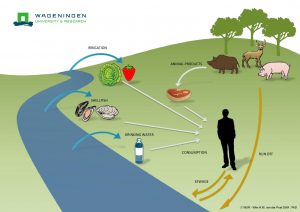The Association of Public and Land-Grant Universities (APLU) and the U.S. Department of Agriculture’s National Institute of Food and Agriculture (NIFA) today announced the recipients of their excellence in agricultural research awards. The awards will be presented at the 132nd APLU Annual Meeting, Nov.10-12 in San Diego, California.
 Who writes this shit.
Who writes this shit.
The awards honor research excellence in three categories – National Excellence in Multistate Research, Excellence in Research Leadership, and National Experiment Station Section Diversity and Inclusion. APLU, NIFA, and the Experiment Station Section of APLU’s Board on Agriculture Assembly present the awards annually.
“Research efforts of our nation’s land-grant universities develop and harness 21st century science-based knowledge and solutions required to improve crop yield and quality, nutritional value, food safety, the environment, and other advances that will drive rural prosperity and economic development,” said NIFA Director J. Scott Angle. “NIFA is proud to be a contributor to these successful research endeavors through our agricultural investments. It gives me great honor to congratulate this year’s award recipients.”
Who talks like this? No one.
The National Excellence in Multistate Research Award recognizes experiment station scientists who are conducting exemplary research and outreach efforts across multiple states. The 2019 award goes to a multidisciplinary team of researchers and extension educators from 39 institutions from across the United States whose work focused on enhancing microbial food safety using risk analysis. The group tackled complex problems across the food production and processing systems like examining foodborne pathogens and food contamination processes and developing devices to help improve food pathogen prediction and detection. The group has helped improve food safety policy, developed novel irrigation water quality assessment tools, and implemented interventions to protect produce from pathogens. They’ve also developed learning materials for the food industry and consumers.
The Excellence in Research Leadership Award recognizes individuals who have served with exemplary distinction, enhancing regional and national research missions, as well as the land-grant ideal. Individuals must have multiple extraordinary service activities, contribute to systematic efforts to enhance diversity and inclusion, as well as significant accomplishments in the agricultural sciences.
The 2019 Leadership recipients are:
Joe P. Colletti, Senior Associate Dean in the College of Agriculture and Life Sciences at Iowa State University, for tireless advocacy for team science and science with practice;
Cameron Faustman, former Associate Dean College of Agriculture, Health, and Natural Resources and Associate Director of Storrs Agricultural Experiment Station at the University of Connecticut, for strong engagement and impact with the region’s research association;
Bret W. Hess, former Director of Wyoming Agricultural Experiment Station and Associate Dean for research, College of Agriculture and Natural Resources, University of Wyoming for enthusiastic and visionary advancements with strategic initiatives;
Saied Mostaghimi, Director, Virginia Agricultural Experiment Station and Associate Dean for Research and Graduate Studies, College of Agriculture and Life Sciences, Virginia Polytechnic Institute and State University as an advocate for interdisciplinary research collaborations in agriculture and natural resources; and
Mortimer H. Neufville, President and Chief Executive Officer, 1890 Universities Foundation known for creating and implementing mission-aligned academic, research and Extension programs.
The National Experiment Station Section Diversity and Inclusion Award recognizes an individual’s work to empower groups and effectively enhance inclusion within organizations. The award recognizes efforts that aspire to achieve consistent, holistic and inclusive excellence. The 2019 award goes to Jeff Jacobsen, North Central Regional Association Executive Director, for his leadership and team management in crafting and implementing strategies that champion a long-term diversity and inclusion agenda for the 1862 Experiment Stations (ES) and 1890 research programs at Land-grant Institutions. A permanent Diversity Catalyst Committee was created and consistently catalyzes a long-term change in ES culture that promotes diversity and inclusion with research leaders and their research communities.
 This means that ingesting raw pork liver could mean you’re ingesting a strain of HEV that’s similar enough to human HEV that it could cause you get infected.
This means that ingesting raw pork liver could mean you’re ingesting a strain of HEV that’s similar enough to human HEV that it could cause you get infected.









